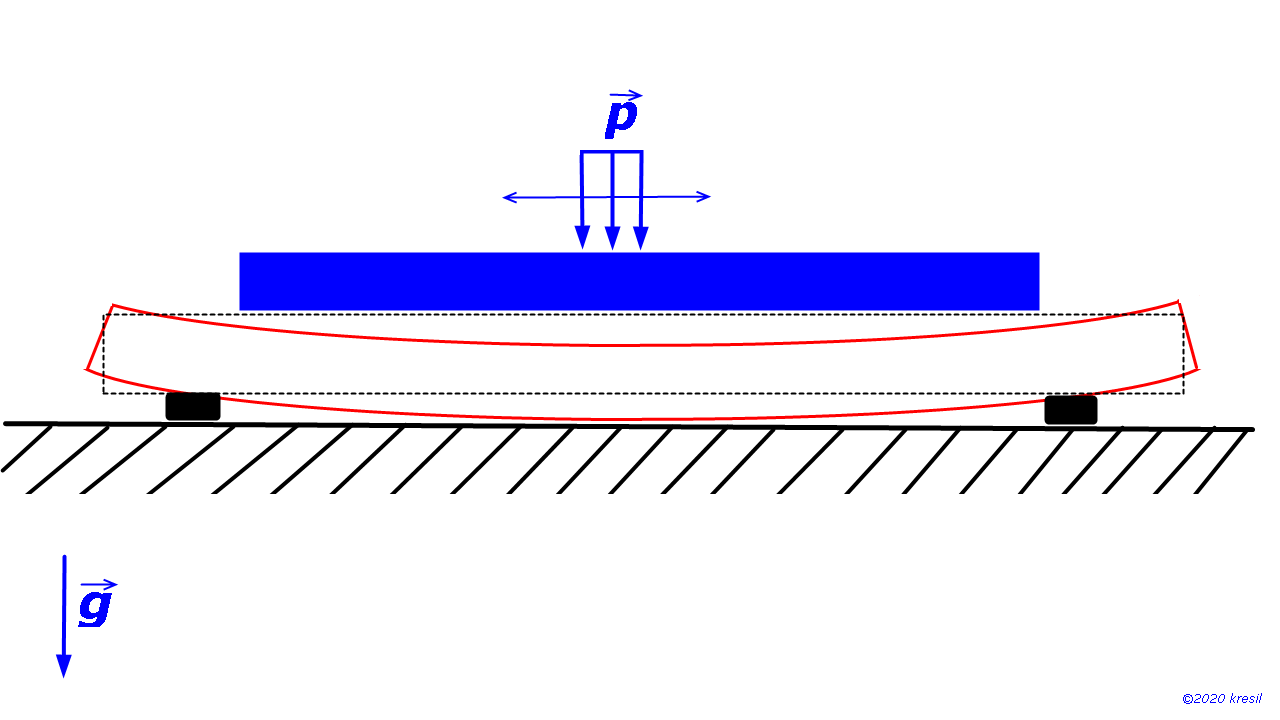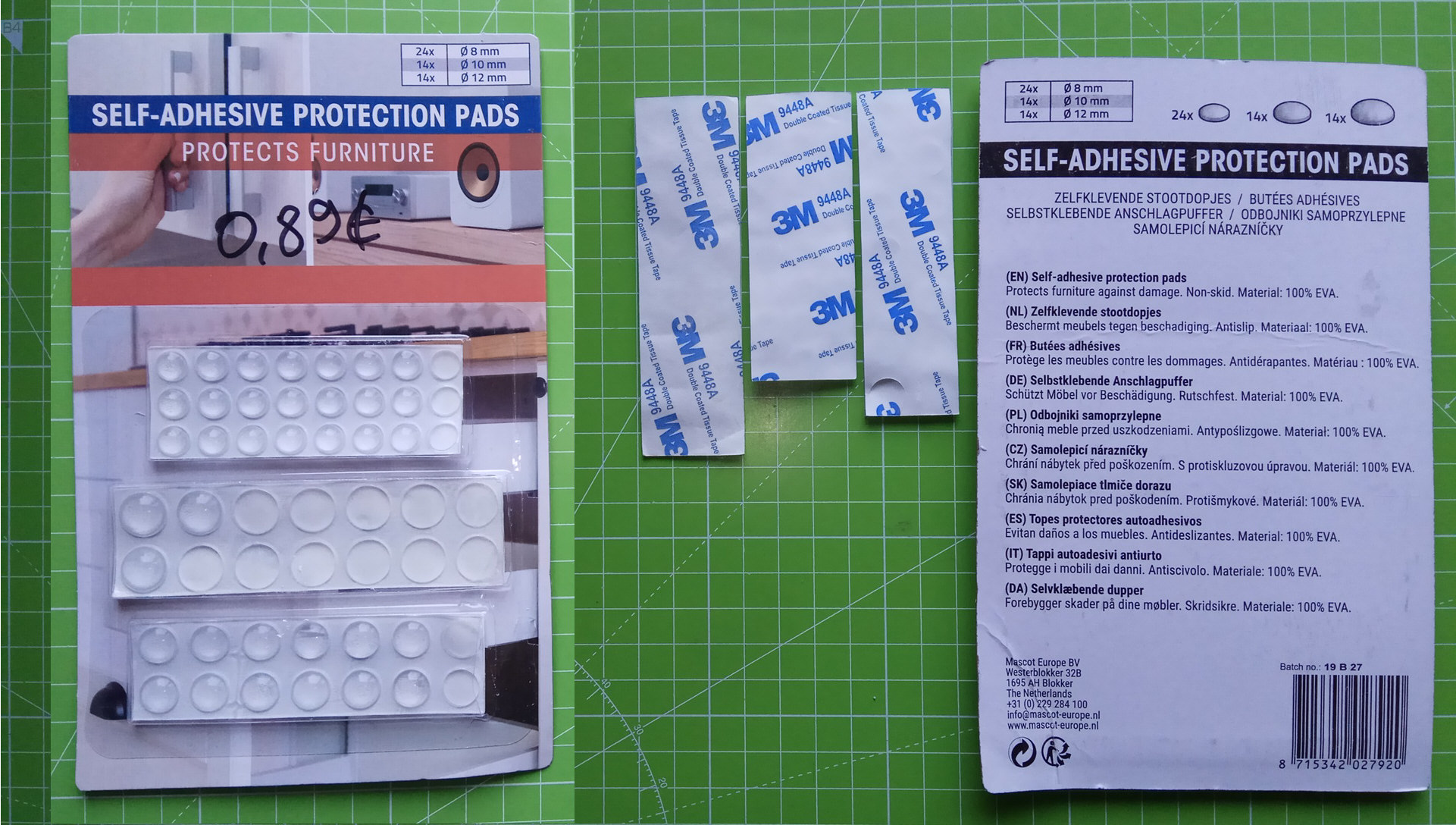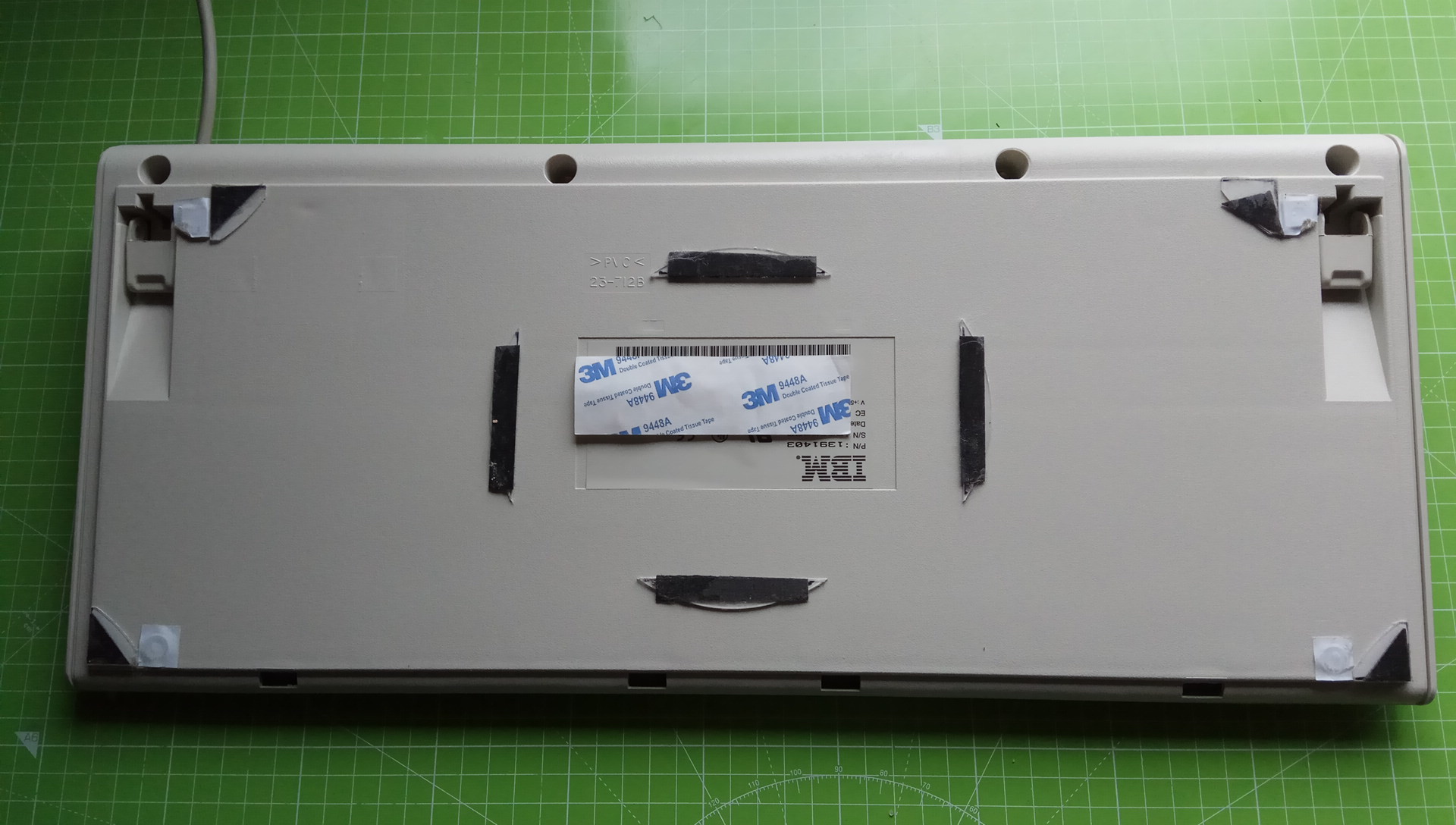How it's done, you're asking?
Well, you sit on a chair at your office desk , resting your left hand/wrist/palm/fist on the desktop, holding one end of your 1x 204F somehow to your liking with three fingers, comfortably. The other end of the 204F sits on the desk, maybe with a rag in between for noise reduction. The stone's flat side should point upwards. It is not necessary to hold the stone very firmly, it is actually quite easy/effortless to hold the narrow triangle stone more or less steady, flat side pointing upwards. What matters is not that the flat side is steady relative to the horizontal desktop but that it is steady relative to the contacting knife edge: if the stone tilts/turns a few degrees (because it is not held in 100% fixed position by your left hand/fingers) and the knife edge is tilted/turned by the exact same amount (because it is the contacting knife which produced the tilting/turning of the stone in the first place!), then there is no harm done, as you realize; btw this phenomeon is exploited in the WorkSharp GSS with its pivot response. The rest is history: you take the knife in your right hand, place the knife edge at your preferred angle on the stone, exert notable pressure
, resting your left hand/wrist/palm/fist on the desktop, holding one end of your 1x 204F somehow to your liking with three fingers, comfortably. The other end of the 204F sits on the desk, maybe with a rag in between for noise reduction. The stone's flat side should point upwards. It is not necessary to hold the stone very firmly, it is actually quite easy/effortless to hold the narrow triangle stone more or less steady, flat side pointing upwards. What matters is not that the flat side is steady relative to the horizontal desktop but that it is steady relative to the contacting knife edge: if the stone tilts/turns a few degrees (because it is not held in 100% fixed position by your left hand/fingers) and the knife edge is tilted/turned by the exact same amount (because it is the contacting knife which produced the tilting/turning of the stone in the first place!), then there is no harm done, as you realize; btw this phenomeon is exploited in the WorkSharp GSS with its pivot response. The rest is history: you take the knife in your right hand, place the knife edge at your preferred angle on the stone, exert notable pressure  , and move the blade rapidly back and forth within a small range of the stone, and then work along the entire blade length and the entire stone length. This creates a burr. Even on the 204UF (or the GREEN10000 for that matter) the burr should be easily detectable with your thumb; if you can't feel the burr with your thumb, then there is no burr. That simple. Once you've created the burr along the entire knife edge, you flip the blade, do rapid back and forth movements (this is called sharpening, isn't it?
, and move the blade rapidly back and forth within a small range of the stone, and then work along the entire blade length and the entire stone length. This creates a burr. Even on the 204UF (or the GREEN10000 for that matter) the burr should be easily detectable with your thumb; if you can't feel the burr with your thumb, then there is no burr. That simple. Once you've created the burr along the entire knife edge, you flip the blade, do rapid back and forth movements (this is called sharpening, isn't it? ), creating a burr on the opposite side. Now you've apexed the edge and you can proceed with burr reduction, burr removal, progressing with the 204UF, or leather stropping. The rapid back'n forth movements under pressure is key here: it creates a burr in no time. And it's what you cannot really do conveniently, if you use the 204F conventionally, i.e. in the Sharpmaker; some users do something similar/equivalent, (slowish) up'n down movements, in the Sharpmaker but i prefer the 204-freehanding for it.
), creating a burr on the opposite side. Now you've apexed the edge and you can proceed with burr reduction, burr removal, progressing with the 204UF, or leather stropping. The rapid back'n forth movements under pressure is key here: it creates a burr in no time. And it's what you cannot really do conveniently, if you use the 204F conventionally, i.e. in the Sharpmaker; some users do something similar/equivalent, (slowish) up'n down movements, in the Sharpmaker but i prefer the 204-freehanding for it.
The goal is to apex the knife edge (and minimize the burr). And i am telling you that 204-freehanding (or ruixin-freehanding for that matter) costs less time and efforts to get there than using the Sharpmaker blindly following the conventional instructions from the manual or using the Sharpmaker at all. With the 204-freehanding you can feel the pressure in your left hand/fingers and thereby better control the sharpening process, like with a leather strop in your left hand you effectively control the sharpening with 2 hands, your body/arms/hands position always feels comfortable, etc etc.
I will continue making use of the 204-stones this way. It is imho perfect for edge maintenance (and it doesn't create a micro bevel!). No more conventional Sharpmaker usage for me! No more.
If you're inspired or motivated to abandon the Sharpmaker and transition to 204-freehanding too, then ...

Well, you sit on a chair at your office desk
 , and move the blade rapidly back and forth within a small range of the stone, and then work along the entire blade length and the entire stone length. This creates a burr. Even on the 204UF (or the GREEN10000 for that matter) the burr should be easily detectable with your thumb; if you can't feel the burr with your thumb, then there is no burr. That simple. Once you've created the burr along the entire knife edge, you flip the blade, do rapid back and forth movements (this is called sharpening, isn't it?
, and move the blade rapidly back and forth within a small range of the stone, and then work along the entire blade length and the entire stone length. This creates a burr. Even on the 204UF (or the GREEN10000 for that matter) the burr should be easily detectable with your thumb; if you can't feel the burr with your thumb, then there is no burr. That simple. Once you've created the burr along the entire knife edge, you flip the blade, do rapid back and forth movements (this is called sharpening, isn't it?The goal is to apex the knife edge (and minimize the burr). And i am telling you that 204-freehanding (or ruixin-freehanding for that matter) costs less time and efforts to get there than using the Sharpmaker blindly following the conventional instructions from the manual or using the Sharpmaker at all. With the 204-freehanding you can feel the pressure in your left hand/fingers and thereby better control the sharpening process, like with a leather strop in your left hand you effectively control the sharpening with 2 hands, your body/arms/hands position always feels comfortable, etc etc.
I will continue making use of the 204-stones this way. It is imho perfect for edge maintenance (and it doesn't create a micro bevel!). No more conventional Sharpmaker usage for me! No more.
If you're inspired or motivated to abandon the Sharpmaker and transition to 204-freehanding too, then ...
Last edited:


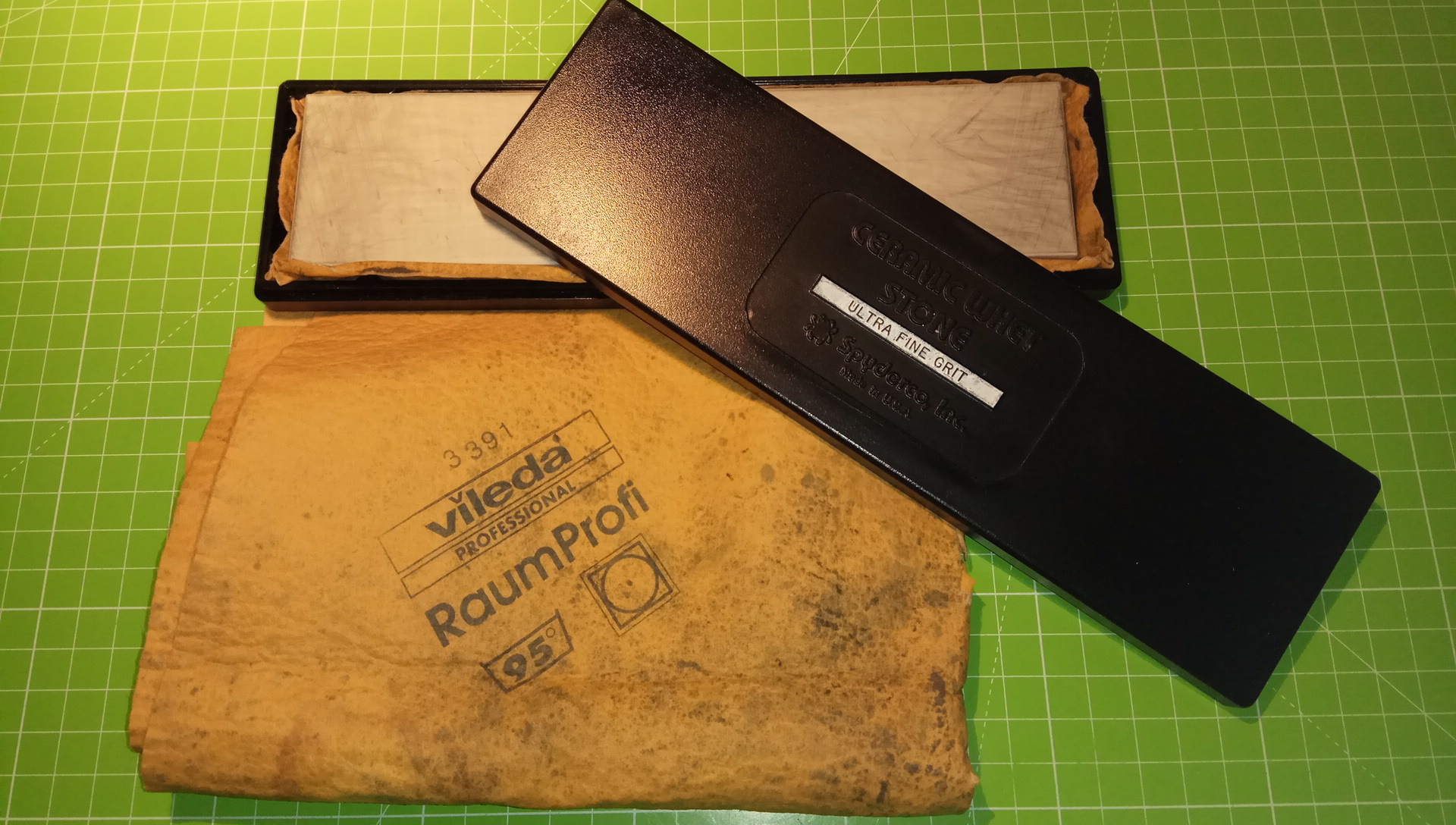
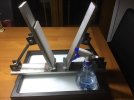
 by Work Sharp). Some people hold their stone, or leather strop, or KME in the left hand instead of leaving it on the table desktop. Same same. As long as the contacting angle between surface and tool stays the same, all these flexible approaches are valid.
by Work Sharp). Some people hold their stone, or leather strop, or KME in the left hand instead of leaving it on the table desktop. Same same. As long as the contacting angle between surface and tool stays the same, all these flexible approaches are valid.